
© 2010-2023 by Fine Arts of the Southwest, Inc. All rights reserved.
Unauthorized reproduction or use is strictly prohibited by law.
A unique and exceptional historic Hopi
“Sikyatki-Revival” style black-on-cream
pottery bowl by Nampeyo, c. 1898-1903
Here is the great Hopi pottery Matriarch, Nampeyo of Hano (1858-1942) at her most quirky and creatively expressive,
out there where the busses don’t run as the saying goes. She is following her instincts here with the unique design of this wonderful and quirky Sjkyatki-influenced bowl. Sikyatki-Period pottery, 1375-1625 A.D. at Hopi was generally considered to be the finest pottery ever made in the Americas and was Nampeyo’s early design inspiration. And even though this piece looks sort of out there so to speak, the actual design follows her standard materials, methods and general design repertoire very closely. To begin with, the potting here is simply superb, the bowl is most finely formed, superbly polished and perfectly fired in the ancient Sikyatki manner, the painstaking, treacherous, blast-furnace-like extreme heat of ultra high-temperature firing with Lignite coal from seams in the walls of the Hopi Antelope Mesa on the far eastern edge of the Hopi reservation. This was Nampeyo’s firing method of choice and she developed a thorough mastery of it
in her early Sikyatki-Revival years from the late 1880’s through perhaps 1915-20.
She followed the normal Sikyatki Period (1375-1625 A.D.) playbook quite closely in most technical respects with this bowl, using hand-ground grey clay from Antelope Mesa as the ancients did to obtain the final bone China-whitish yellow clay color as well as the lovely white-yellow-grey-pink firing blushes which come from the intense heat. This clay is so fine that it does not require a tempering agent and when fired with coal it yields extremely strong durable thin vessel walls that allow for greater flexibility in pottery shapes and sizes. The black-on-cream color scheme with no additional red is also something one sees from time to time in the ancient ware and in Nampeyo’s interpretations of it. Interestingly, Nampeyo also chose here the older Hopi method off using a Basketry start, impressing the lower coils of clay into a round basketry tray and letting them dry to build up the base of the bowl. The evidence of this can be seen by the slightly indented lower shoulder of the bowl and the faint marks of the baskets coils indented in the vessel’s lower clay body.
Now to the particulars of the unique design this brilliant artist has presented us with here. The design features two horizontally-opposed and symmetrical four-part design elements placed equidistant at 45 degree angles to each other in
a rotating format. The first set of four is a sort of cloverleaf design which signifies the four cardinal directions of the world all surrounding a central square signifying the underworld and the heavens. These designs are punctuated all along their lengths with repeating circular prayer plume representations. Inside each leaf of the four-part cloverleaf is
a single cross representing a star in the sky. The center square is outlined on all sides by ancient Sikyatki-style spiral representations symbolizing movement and migration and in the very center are two co-joined ancient Sikyatki-style stylized bird profile representations.
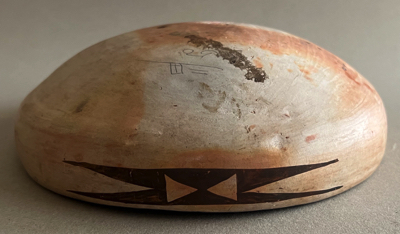
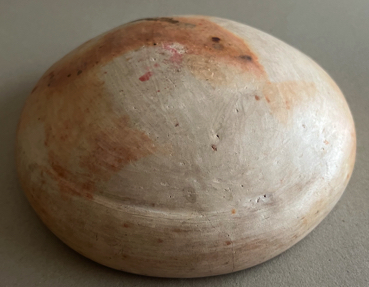
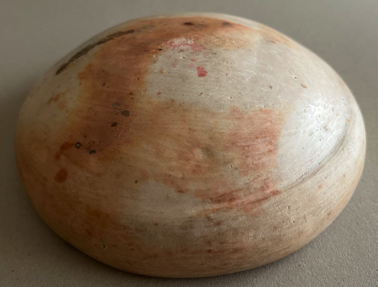
The four bisecting linear elements of the other four-part design which are also decorated along their lengths with similar stylized bird profile forms. And enclosing the entire design field is a characteristic Nampeyo touch, an unbroken double framing line, one quite thick, the other quite thin. All in all, it’s a masterful manipulation of space and of positive and negative spaces as the empty negative spaces inside the lines of the design and outside surrounding the design are just
as defining and compelling as the positive painted parts themselves. Overall, the design is quite dynamic with a great deal of freshness, vigor and motion. It’s a uniquely attractive, dynamic and starkly Modernist presentation at the end of the day. The painted design on the exterior of the bowl is confined solely to a single painted horizontal, stylized feather glyph also quite reminiscent of the Sikytaki Period as seen below.
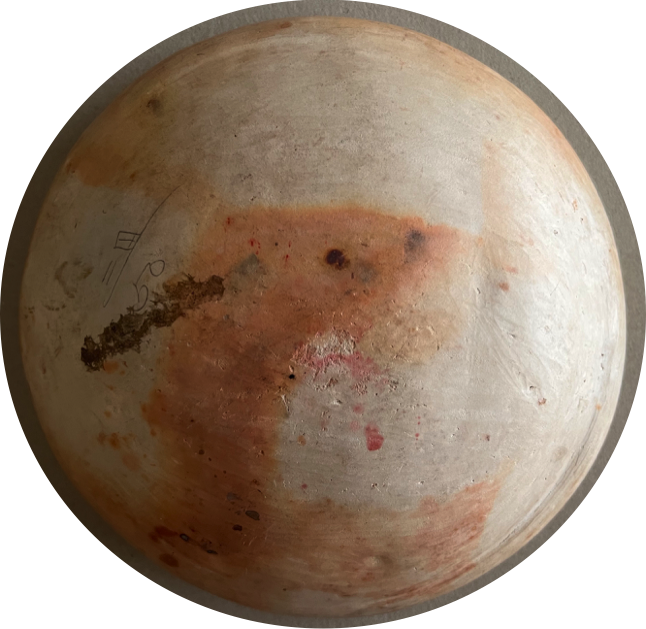
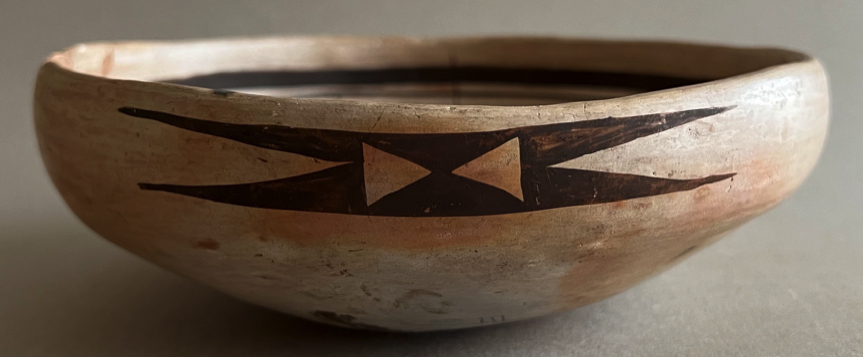
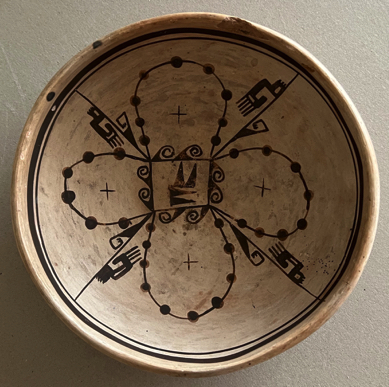
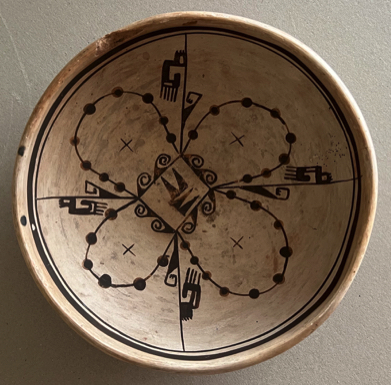
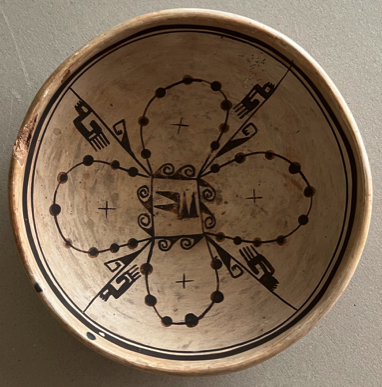
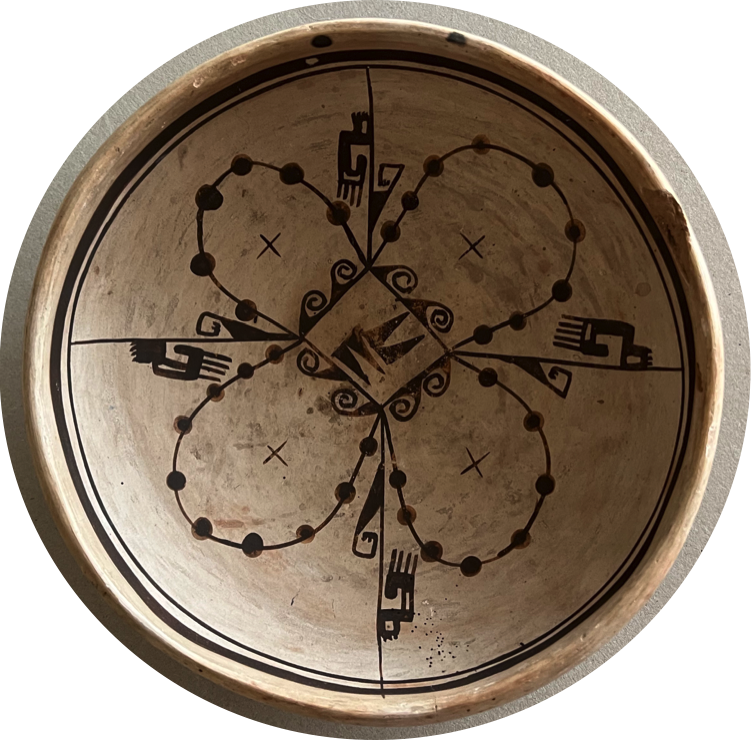
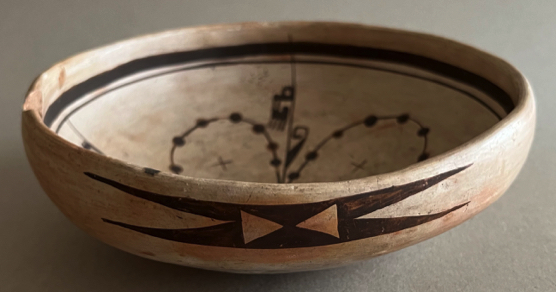
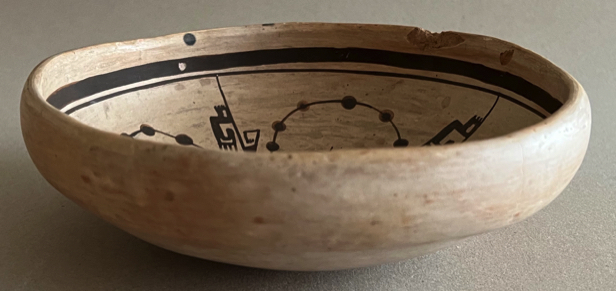
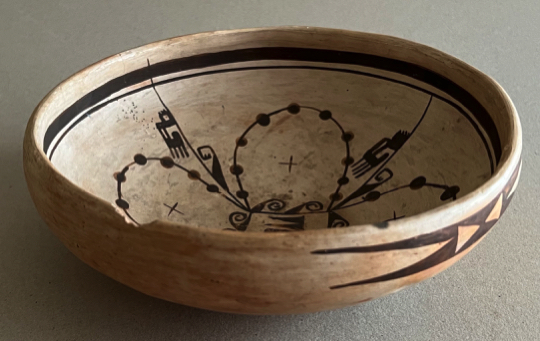
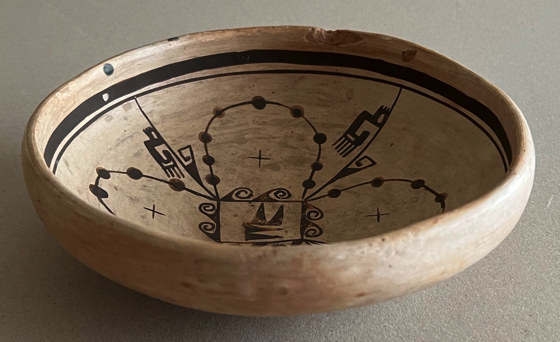
The bowl measures 8" in diameter and is 2 1/2" in height. It is in generally excellent age-appropriate original condition and particularly so for its approximate century and a quarter of age. There are a few to be expected chips, nicks, abrasions and small areas of paint loss, but there are no visible cracks and a thorough examination of the bowl under Ultraviolet light reveals no evidence at all of any restoration or overpainting.
This is a singular and wonderful piece by a singular and wonderful Native artist
whose unbridled creativity and imagination knew absolutely no boundaries.
Price $6,400
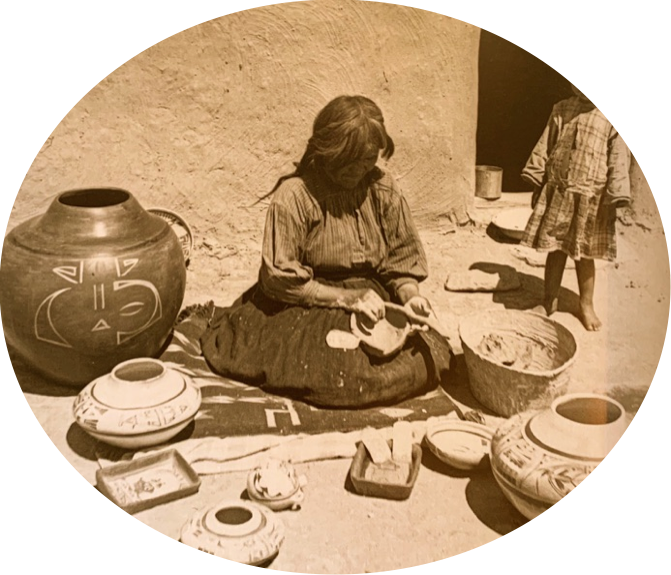
Above and below illustrations source and © "Prehistoric Hopi Pottery Designs” by Jesse Walter Fewkes, Dover Books, 1973.
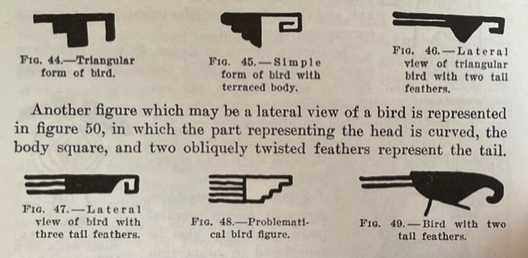
"Mrs. Nampeyo, an acknowledged best Hopi indian woman Pottery maker 1st Mesa Hopiland, Ariz. Sichomovi."
R. Raffius, 1905 photo source and © Keystone-Mast Collection, UCR/California
Museum of Photography, University of California, Riverside